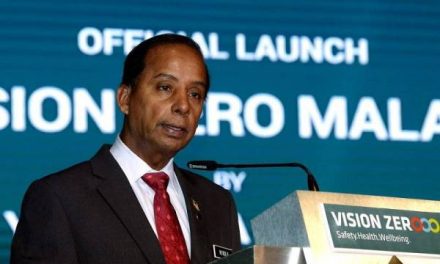Thavalingam Thavarajah is a barrister-at-law (Grays Inn) and partner at Lee Hishammuddn Allen & Gledhill.
The recently-implemented Movement Control Order (MCO) has raised many issues pertaining to the employment relationship.
Shutting down operations for a period of more than an average employee’s earned yearly annual leave has led to different interpretations in the treatment of their employment status during the MCO (particularly for those under non-essential services).
Companies that have begun rationalisation and restructuring exercises as a result of the global economic downturn prior to the MCO appear to be unclear as to their position moving forward.
In the meantime, the government has now released a stimulus package to subsidise RM600 a month as wages for those earning below RM4,000 a month for a three-month duration, subject to the employer having suffered a loss of income of more than 50% since Jan 1, 2020 to avoid any possibility of retrenchments being undertaken in the immediate future.
In fact, the message is clear — no retrenchment three months after the wage subsidy program is implemented. Effectively, a moratorium is in place once the subsidy program is implemented.
Any proposed retrenchment will therefore have to be deferred for the moment.
The MCO has been implemented for a purpose. There is social responsibility in the context of health, safety and the general welfare of the population.
The MCO is not for an indefinite period and hence the issue of frustration of the employment contract does not arise at this juncture.
The Ministry of Human Resources has issued guidelines and frequently asked questions (FAQs) on how to manage the employment relationship during the MCO.
Salaries must be honoured and annual leave cannot be imposed unilaterally during this period.
However, there appears to be a “silent” qualification in that if it is mutually agreed upon then there is no issue.
There are employees who voluntarily agree to a pay cut or to take their annual leave during the MCO to safeguard their employment and to keep the company afloat.
For this to achieve its desired results, there must be effective communication between the employer and employees through consultation and consensus. This can be undertaken online via FAQs and any other appropriate method.
Consent is therefore crucial to avoid any subsequent dispute.
In the interim, companies can continue undertaking cost-cutting measures in the form of freezing new recruitment, limiting overtime work, avoiding unnecessary new ventures and acquisitions, or even adopting a flexible wage system.
Once all this has been undertaken (including the three-month retrenchment moratorium) but to no avail, then there is nothing to preclude the company from proceeding to implement more drastic measures like pay cuts across the board, temporary lay-offs, reducing work hours, and finally downsizing the workforce.
The ultimate aim, of course, remains keeping the company afloat and at the same time providing employees with security of tenure.
Retrenchment is an inevitable consequence but there are various alternatives before embarking on this path.
Notwithstanding the six-month levy exemption for all sectors which will certainly be welcomed by employers, this is an opportune time for the Human Resources Development Fund (HRDF) to take the lead and extend its existing training and re-skilling programmes in place for the betterment of the workforce. Employees must be prepared to think out of the box and embrace new work cultures.
Redundancy should always be the last resort, but there are certainly limitations as well to this.
There must be a balance between legal and socio-economic obligations.









